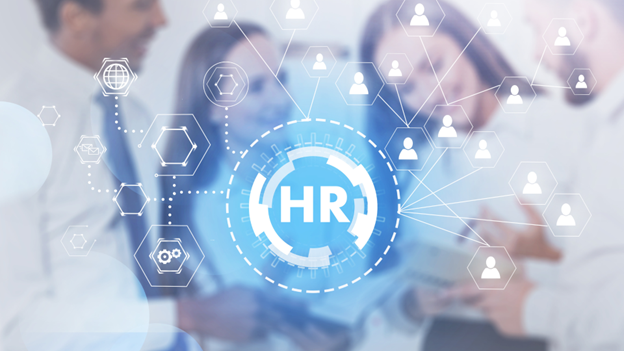Organizations in 2025 are relying on mapping software to locate and assess talent more effectively. By combining mapping tools with AI-guided analytics, managers spot where high-demand skills are concentrated and where gaps exist. This method helps recruiters zip in on candidate pools that meet their requirements by location. As of 2025, over eight out of ten firms are now using skills-based hiring, guided by mapping platforms that point to strong candidate areas for both local and remote roles.
Reports show that ninety-eight percent of surveyed companies consider these mapping features effective for screening, reducing hiring times, and raising candidate quality. Most mid-size and large employers now use hiring software that brings in maps for benchmarking local talent pools and setting competitive pay, helping them make smarter hiring choices.
An example is IBM, which uses internal mapping to spot retiring employees and identify where hard-to-fill skills are most needed. The company responded by starting local hiring and upskilling programs, which helped lower the number of unfilled roles in those regions by thirty percent in only a year.
Getting Visibility Into Distributed Teams
Distributed teams are much more common now. Most workers express a wish for remote options, and many companies need to manage staff spread across cities and countries. With live maps built into HR tools, managers can see job types and skills by location almost instantly. This approach lets teams:
- Plan office or remote working arrangements by tracking real-time occupancy
- Detect skill clusters or shortages across their footprint
- Adjust roles and resources during business disruptions, like sudden outages or absenteeism
Platforms such as UKG and HiBob now display heatmaps where managers spot where the workforce concentrates, by both location and job type. This data helps them respond quickly when interruptions threaten continuity or staffing.
Streamlining Onboarding and Tracking Staff
When new employees join, mapping software places them on organizational maps by skill, team, and location. This helps HR set up peer groups for in-person or virtual onboarding sessions based on physical proximity. The same system aligns recruits with nearby mentors, matches workplace resources to staff needs, and tracks compliance for each site.
At Amazon, a system links fresh hires to local team training and events. As a result, engagement scores among new joiners at various sites increased by twenty-two percent between late 2024 and 2025.
Mapping Remote Talent and Workforce Risk
Managers often face uncertainty about the reach and concentration of remote and field-based staff. By placing employee locations and role types on a single dashboard, mapping software helps track both office-based engineers in San Francisco and remote recruiters in Texas. This allows for spotting regions where certain job categories are clustered or thinly spread.
With the same tool, it becomes possible to prepare for events like weather disruptions by visualizing staff impacted by a local emergency. Seeing this on a map, while also tracking home office equipment distribution and travel frequency, supports making quick decisions that protect resources and people.
Visualizing Skill Gaps and Boosting Mobility
Mapping platforms do more than chart head counts. They also show what skills are present in each team, office, or region. Managers use these tools to:
- Find out where needed job skills are strong or missing
- Design re-skilling and training by place
- Weigh how moving teams or closing offices may affect the skills mix
Talent mapping is also fueling more internal movement by showing where promotion or project slots are available. Recent survey data links mapping to higher staff engagement and stronger company outcomes. SAP reports that using mapping tools to spot leadership prospects in certain areas led to a fifteen percent improvement in hiring managers from underrepresented regions.
Planning Workspaces with Precision
As flexible work options take hold, companies adjust their use of offices more often. Mapping software tracks where and when staff check in at worksites. Data on daily occupancy patterns lets managers choose where to expand, shrink, or close workspaces, and where office resources are most needed. When problems such as severe weather or safety threats hit, these maps point out who is affected and how fast help can reach them.
Deel, an HR software provider, states their clients lowered workspace expenses by twelve percent on average and reduced absentee rates in high-risk areas by up to forty percent after using these real-time location dashboards.
Predicting Trends with AI
Artificial intelligence is making mapping tools better. These systems now predict where roles or skills will be needed soon, and even flag staff who might be thinking about leaving. The best-known HR software companies, including ADP and Oracle, already include these options. They are most common in companies that need to track fast growth or large numbers of remote hires.
Impact and Direct Commentary
Human resource leaders report strong gains from visualization tools. One senior executive at a Fortune 100 company described workforce mapping as a key part of sharper staffing decisions and faster action. Most HR managers using mapping tools name time-saving and productivity as the main benefits, with many sharing that staff also report wider access to growth and learning chances once dashboards are in place.
Measurable Outcomes and Market Growth
The value of these approaches is supported by market data and commentary. By 2029, the global HR technology market is forecast to reach over thirty-nine billion dollars, with rapid adoption driven by needs in automation, performance analytics, and secure data handling. Almost all recent surveys confirm that mapping and AI-driven analytics are now seen as a base requirement for improving hiring, workspace planning, mobility, and risk response strategies.
As of 2025, companies making use of workforce mapping software report better time-to-hire, lower unplanned costs, and a faster response to both business needs and emergencies. These results are echoed in feedback from both employees and HR professionals who now use these platforms daily.
Guest writer


























